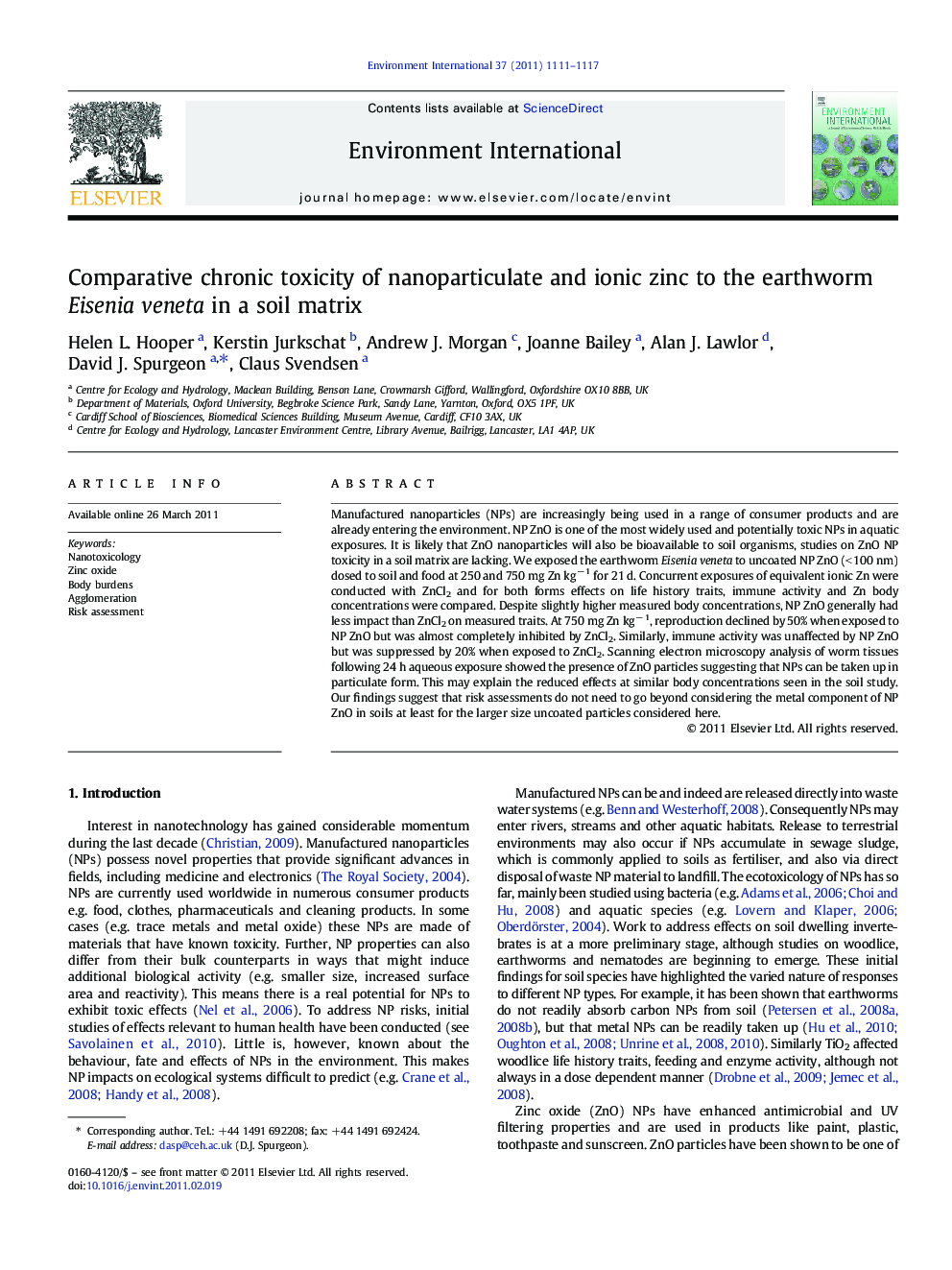| کد مقاله | کد نشریه | سال انتشار | مقاله انگلیسی | نسخه تمام متن |
|---|---|---|---|---|
| 4423316 | 1308820 | 2011 | 7 صفحه PDF | دانلود رایگان |

Manufactured nanoparticles (NPs) are increasingly being used in a range of consumer products and are already entering the environment. NP ZnO is one of the most widely used and potentially toxic NPs in aquatic exposures. It is likely that ZnO nanoparticles will also be bioavailable to soil organisms, studies on ZnO NP toxicity in a soil matrix are lacking. We exposed the earthworm Eisenia veneta to uncoated NP ZnO (< 100 nm) dosed to soil and food at 250 and 750 mg Zn kg− 1 for 21 d. Concurrent exposures of equivalent ionic Zn were conducted with ZnCl2 and for both forms effects on life history traits, immune activity and Zn body concentrations were compared. Despite slightly higher measured body concentrations, NP ZnO generally had less impact than ZnCl2 on measured traits. At 750 mg Zn kg− 1, reproduction declined by 50% when exposed to NP ZnO but was almost completely inhibited by ZnCl2. Similarly, immune activity was unaffected by NP ZnO but was suppressed by 20% when exposed to ZnCl2. Scanning electron microscopy analysis of worm tissues following 24 h aqueous exposure showed the presence of ZnO particles suggesting that NPs can be taken up in particulate form. This may explain the reduced effects at similar body concentrations seen in the soil study. Our findings suggest that risk assessments do not need to go beyond considering the metal component of NP ZnO in soils at least for the larger size uncoated particles considered here.
Research Highlights
► Exposure to both ZnCl2 and ZnO NPs reduce earthworm reproduction.
► Earthworm immune activity was unaffected by NP ZnO but was suppressed by ZnCl2.
► Although effects were less, tissue Zn was actually higher in NP exposed worms.
► Scanning electron microscopy showed ZnO particles in the worm tissues.
► Study results suggest accumulation, but low toxicological availability of NP ZnO.
Journal: Environment International - Volume 37, Issue 6, August 2011, Pages 1111–1117